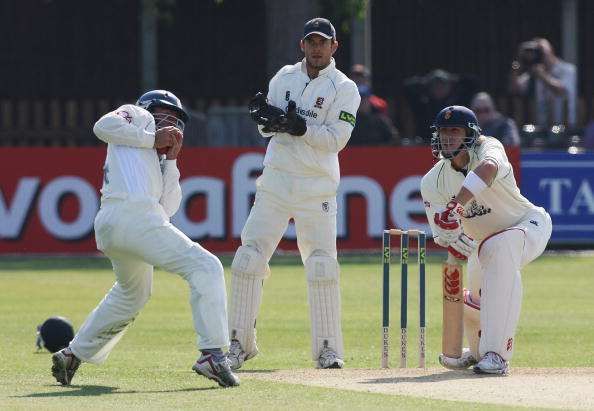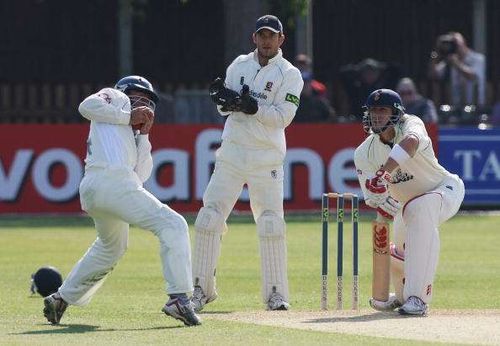
Top 5: Reasons why the silly point is the best fielding position in Cricket
Mumbai Test, 2004 - Australia vs India
Debutant Dinesh Karthik is at the crease. Ricky Ponting is at silly point with his baggy green on. No helmets, he hates them when fielding, but boy, doesn't he love being at silly point. Michael Clarke is bowling his part-time orthodox left arm spin. Karthik gets a leading edge as he tries to flick to the on-side.
0.16 seconds. 160 milliseconds. 1/6th of a second.
That's all he gets. Punter dives 1.5 feet high and is almost horizontal. In physics, there is something called persistence of vision, which states that a human eye cannot make out between two images when they flash within 1/16th of a second.
The old movie reel projector works on this principle. What Ponting saw was 4 frames, whereas we see as many as 24 frames in a second for a reel film. It was sheer brilliance, if not inhuman.
The silly point fielding position is a dangerous one, but it is rewarding. Ask Ponting. Ask Pujara. Ask Hashim Amla or James Taylor. No not Alistair Cook, he has been hit on the body many times.
What makes this position an important one in the cricket field?
#1 He has a great idea about the pitch having watched it from close quarters
A fielder at silly point sees the pitch from the closest possible position. Even pitch analysts do not duck as much as fielders in this position, to get a view of the pitch and its characteristics.
He has seen that Shane Warne ball turn viciously after pitching, shaking up the dust from underneath the rolled surface. He knows exactly where those rough patches are, and which areas might make the ball keep a tad low.
He goes out to bat with a clear idea of the surface, having seen through it the whole day from close quarters. The silly point fielder has a big advantage, especially in subcontinental pitches, like the one laid out for South Africa at Nagpur in their recent tour to India, where the pitch was as dry and dusty as a deserted highway near the Thar desert.

